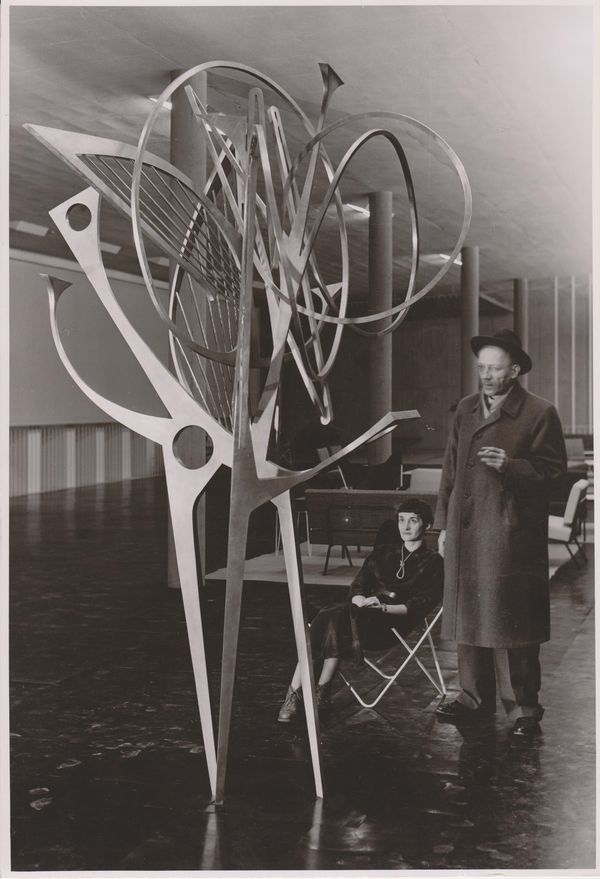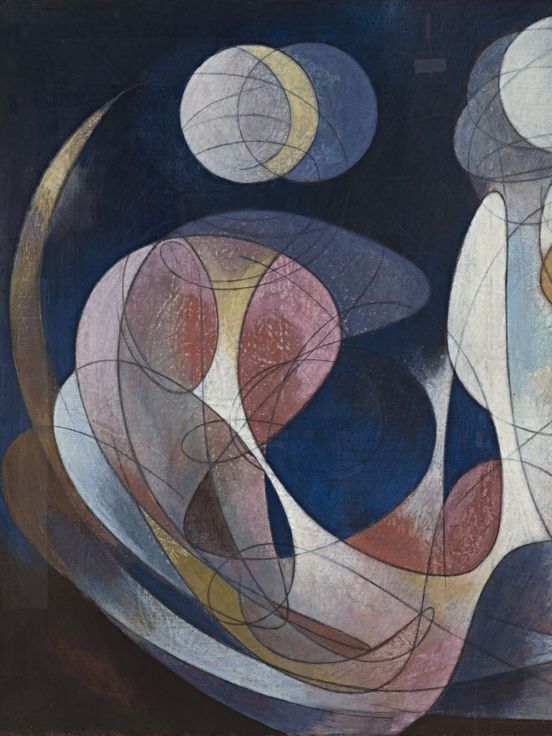
Hans und Hildegard Uhlmann vor Skulptur Concerto in der Hochschule der Musik, Berlin 1954
© Ewald GnilkaHans Uhlmann was born in Berlin, where he remained almost exclusively until 1975. He completed studies in mechanical engineering, and his first attempts at sculpture date from 1925. Uhlmann taught as an assistant to Max Kloß at the Technical University Berlin from 1926 to 1933. It was at that time that he made his first geometrical heads, which were exhibited in Galerie Gurlitt. In 1932 Uhlmann discovered wire as a material for his sculptures. On 26th October 1933 he was arrested while distributing anti-fascist pamphlets and charged with “inciting high treason”. He was imprisoned in Berlin-Tegel until 1935. After his release, the artist – whose work was classified as “degenerate” – again began to make metal sculptures, which he exhibited in Galerie Rosen as from 1945. Waldemar Grzimek described Uhlmann as an “engineer of plastic form”, one reason being that he often worked in metal. His work had considerable influence on style in Germany and included many pieces for public space.
The extensive archive relating to Hans Uhlmann, which was donated to the Berlinische Galerie by the artist’s son, contains biographical material, letters, designs, manuscripts, the artist’s postcard collection, papers, and invitations to exhibitions as well as numerous photos of his works.
